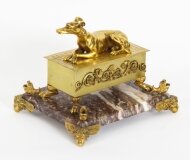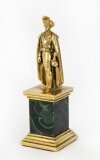Lost Wax Method
sometimes called by the French name of cire perdue or the Latin, cera perduta is the process by which a bronze or brass is cast from an artists sculpture.
In industrial uses, the modern process is called investment casting. An ancient practice, the process today varies from foundry to foundry, but the steps which are usually used in casting small bronze sculptures in a modern bronze foundry are generally quite standardised.
The Medici lions are a pair of marble sculptures of lions, one of which is Roman, dating to the 2nd century AD, and the other a 16th-century pendant; both were by 1598 placed at the Villa Medici, Rome. Since 1789 they have been displayed at the Loggia dei Lanzi in Florence. The sculptures depict standing male lions with a sphere or ball under one paw, looking to the side.
Copies of the Medici lions have been copied and publicly installed in over 30 other locations, and smaller versions made in a variety of media; Medici lion has become the term for the type.
The Albani lion, a similar ancient sculpture, now at the Louvre
A similar Roman lion sculpture, of the 1st century AD, is known as the Albani lion, and is now in the Louvre. Here, the stone used for the ball is different from the basalt body. Both may derive from a Hellenistic original.
The form of the traditional Chinese guardian lions became standardized during the Ming dynasty to feature a lion sitting back with one front paw on a sphere. Another variant of the theme, standing with its tail more erect, tops the Lion's Mound memorial on the battlefield of Waterloo.





















